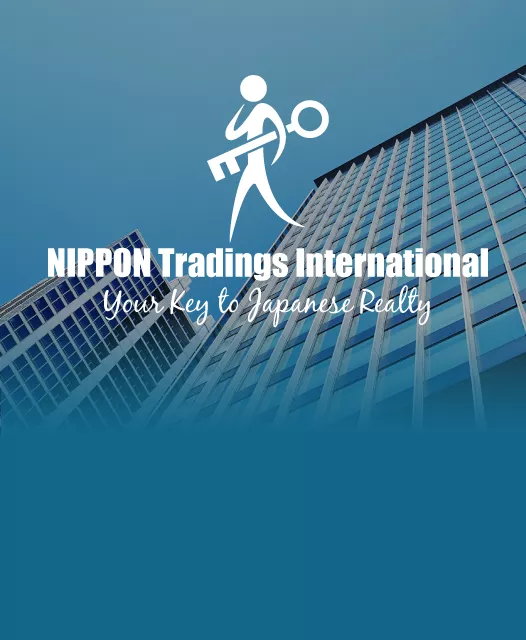Japan’s Real Estate Market in 2021-2022 – Annual Summary & Projections

This article is provided by Mr. Ziv Nakajima-Magen - Partner & Executive Manager, Asia-Pacific Nippon Tradings International (NTI)
When Crisis Becomes the Norm
If 2021 has done anything, as far as the global Covid-19 pandemic is concerned, it’s to drive home the fact that the “new normal” is already here, both in practice and effect. With hopes of a quick recovery and return to pre-crisis normality all but abandoned by the way side, particularly towards the end of the year, and with the rapidly increasing Omicron variant case count reaching historical peaks in most countries around the world - various resulting work and lifestyle trends that may have been deemed temporary, are now being cemented as routine. Japan’s landscape is no different in this regard– although, similar to many of its Asia-Pacific neighbours, the effects here vary, both in character and in intensity, in comparison to the Western world.
The fact that Japan, as opposed to many of its neighbours, has been far slower in re-opening its borders, which remain all but shut to those who have not been residing in the country prior to the outbreak, however, has put a damper on the country’s economic prospects – but, surprisingly, and for reasons which will be partly explained, or at least speculated on, herein – these lacklustre economic prospects have done little, if anything, to property prices in most industry segments.
“Flight to Safety” Mentality Holds & Increases
As is always the case, the perception of Japan as a safe haven in times of crisis has held firm in 2021, and, if anything, has been further increased – Tokyo is leading in “PWC/ULI”’s survey of investment prospect rankings, replacing Singapore, which has been leading the charts in the two years previous – as always, the local economy’s and national government’s enduring stability, which, along with lender’s reluctance to call on non-performing loans in an attempt to avoid a market crash, have resulted in little to no change in asset prices during these uncertain times. These factors, along with the well-established depth and liquidity of the market, have overcome the city’s unappealing cap rates – which, when combined with readily available funding at extremely low interest rates, are “good enough” for most institutional investors, and particularly when considering traditionally alternative asset class returns such as various bonds, which yield far less in total – as well as in comparison with equity market plays, which are always considered higher risk, even more so in uncertain and potentially volatile times such as these.
This mentality has led to a gamut of large global entities investing or declaring their intention to invest in Japan, and more specifically in Tokyo, via active purchases, expansions of existing portfolios, and the setting up of large funds targeting Japanese property throughout 2021 and, to date, in the first month of 2022 as well, as reported by “Savills Asia”. Japanese real-estate investment trusts (J-REITs), as well, have remained resilient and active buyers and sellers, maintaining high unit prices and healthy dividend payouts in the process. In fact, investment volumes from these large domestic and foreign bodies have increased, although the country’s overall deal volume has decreased somewhat – but still remains within 20% of pre-pandemic levels.
Further enhancing the stability trend, as mentioned, is the fact that the amount of previously assumed foreclosure and distress sales has not materialised, due to an unspoken understanding between lenders and government in Japan – which has served to buoy prices in all metropolitan centres.
Location-wise, however, pandemic-related changes in deal volumes are evident –
CBD Focus Slowly Declines, Hub-and-Spoke Model Slowly Expands
The shift to work-from home hybrid models - while not as prevalent in Asia, due to deeply entrenched work/life balance traditions, an infatuation with “office life” and stubborn and persistent reliance on paper documents - is nonetheless evident in Japan as well. While transaction volumes in Tokyo (-8%) and Nagoya (+8%) remain relatively stable, Osaka (-29%) & Yokohama (-33%) volumes have dropped significantly, according to PWC/ULI, and remarkable gains in volume have been recorded in Chiba (+34%) and Saitama (+68%!!!)
This reflects a keen interest in smaller cities that are close enough to the CBD, for both residential and office properties – as companies decentralise whenever possible, choosing to retain employees by providing them with the option to commute to a smaller office near their homes, for the 2-3 short weekly visits required in a pandemic world. As a result, companies are now moving towards higher grade properties in more suburban areas, as opposed to being laser-focussed on CBD locations, regardless of structural grade, as has been the case in the preceding few decades. In fact, Japan’s biggest historically recorded property transaction, recorded in 2021, has been the sale of Dentsu’s (Japan’s largest advertising company) office building headquarters in central Tokyo, for a total price of more than 300 billion yen (2.6 billion USD) in a sale and lease-back deal, due to decreasing staff attendance at the office as a result of pandemic-age work from home policies (JLL).
Similarly, with the ever-increasing need for a larger residential footprint, to accommodate home offices and far more time spent at home by all family members, the ability to rent or purchase a larger home with a smaller expense out of central metropolitan city wards is fast becoming a reality which investors and developers are well aware of. Population trends also reflect this reality, with central Tokyo resident numbers decreasing by approximately 1%, and the largest numbers of departing residents being in the 0-49 age group – which clearly indicates that young families, or at least those among them whose work allows it, are now favouring a more suburban or smaller township lifestyle whenever possible.
Prices Hold Firm

Regardless of the above, however, and also regardless of the fact that office vacancies are increasing and rents – in particular commercial rents - are dropping in all major cities barring Fukuoka - and helped by banks’ reluctance to call on non-performing loans, as mentioned above - property values have held firm. Central Tokyo values have, in fact, continued to increase, to the point that new residential condos are now forecast to top their pre-1990s bubble peak, according to Bloomberg. And, while this naturally leads to further and further compressing yields, the attractiveness of Tokyo as an investment destination, particularly to large institutional investors, remains robust.
The reason for this is believed to lie firmly in the preference to focus on stable and reliable cash flow, as opposed to the trend in previous years, to prioritise higher yields whenever possible. Since vacancies are far harder to fill in the current climate, due to the fact that tenants are avoiding relocation during this time if at all possible - investors therefore make it their business to try and ensure the continuation of rental income above all else, and at the expense of more creative location and asset selections.
This also explains the continued popularity of residential assets, which have risen to 36% of total investments from 20% in 2020. Over 60% of this total comes from overseas investors, according to Savills. This is far from surprising, in a country which has traditionally sought to protect employment at all costs – massive layoffs as a means to tackle financial downturns has always been avoided in Japan, and the current crisis environment is no different – and so, investing in residential properties remains “the safe bet” in comparison with the far more volatile and economically-dependant commercial market.
Retail Recovery (of sorts)
A surprising shift in popularity has been evident in the retail space. Suffering from the booming rise in e-commerce far before the pandemic hit, and with 99% of retail shoppers being domestic historically, this market segment was already in the process of metamorphosis and adjustment pre-Covid. And, while particular sector that were heavily reliant on international visitors, such as drug stores, still do suffer and will most likely continue to suffer - the luxury segment has actually seen an up-tick in profitability, due to land-locked wealthy consumers who are unable to travel overseas and resort to shopping at home.
The decline in retail asset prices, as well, which has been going on for some time, has reached a point where purchase of such assets has become an interesting proposition once again for many investors. Furthermore, with Japan’s soft approach to lockdowns and tendency for “quasi” states of emergency over the complete shutdowns being put into practice overseas, foot traffic at retail stores has remained relatively high. Creative shifts throughout the last few years have served the sector well, and have led to a higher percentage of nondiscretionary shop tenants at the higher floors of shopping centres and train stations - food, office supplies, home goods and even more creative re-purposing, such as studios, workspaces, libraries, schools, clinics, flex workspaces, last-mile logistics, and even retirement facilities - all of which are taking the place of traditional tenants such as restaurants and other products, which are slowly shifting to the online arena.
Hospitality - a Source of Opportunistic Deal-Making

The hotels sector has, in all likelihood, been the hardest-hit across the entire region – in Japan specifically, the huge influx in inbound international tourism pre-pandemic has led to a hotels construction boom that couldn’t have happened at a worst time. 2019’s foreign visitor arrival numbers, just under 32 million, has led to a gamut of new projects that, as of early 2021, have remained all but empty of guests.
Investors, however, remain extremely bullish on hospitality property prospects, with optimism regarding the re-opening of borders running high, and with hotels being the largest source of distressed deal opportunity, in a market otherwise largely shielded from foreclosures – and many investors are looking forward to scoring cheap deals, then holding tight until recovery occurs, which most believe will start towards the end of 2022. And, while government initiatives such as the “Go To Travel” campaign, meant to boost domestic travel, tend to rise and fall with infection numbers - the fact that these initiatives are stubbornly prevalent, even midst-pandemic, gives hope for the potential of many of these properties remaining afloat until international tourists begin flooding back at a later date.
The basic fundamentals above, coupled with lenders’ willingness to provide funding, have led to several Japan hospitality funds and individual investors closing on some significant deals, mainly targeting assets in the luxury segment – as it is widely believed that the budget and business hotel segment is featuring extremely high supply, which cannot possibly be met by demand, save for creative re-positioning and re-purposing initiatives which, while possible in some cases, are not always feasible in others.
Alternative Assets Remain… Alternative

As far as alternative assets are concerned, while the enthusiasm for logistics properties continues to increase on the back of further expansions in pandemic-driven ecommerce traffic and a huge shortage in supply, this dynamic has also increased cut-throat competition and severely reduced cap rates (although still higher than those available in the office sector, as well as in other countries). In the current climate, many investors have turned to custom development of facilities, or specialised services requiring expertise, such as cold storage and automated shipping facilities, as a way to boost yields – in spite of the higher risk factor involved in such projects. Japan’s power supply stability and advanced governance are a huge bonus for logistics investors active in these spaces, as well as in the data centre segment of the market. As a result, 2020 has seen 39% of the Asia-Pacific logistics deals take place in the country, with final numbers for 2021 projected to be even higher.
Speaking of data centres, these, similarly, require specialised expertise, and are operationally intensive, which further increases the risks involved in such projects – the fact that these assets can command higher rents, however, have increased their attractivity, particularly for larger, cash-rich investors such as sovereign funds and other institutional buyers, who can afford to hire internal specialists for handling these projects. The only option for smaller, less heavy-pocketed investors to be active in this space remains partnering with specialty operators, such as telecommunication and technology companies – which, naturally, tends to reduce yield potential, but is still a viable strategy.
In Summary
Japan’s well documented slowness, often used as a derogative descriptor, actually serves the country well as far as dealing with crisis and avoiding panicked reactions to crisis is concerned – and the country’s handling pf the long-term effects involved in the ensuing global pandemic are exactly such a case in point.
Added factors such as government, corporate and financial institutions adopting, as always, protective policies meant to shield the vast majority of the population from disruption - and most significantly among those, property owners, staffers and residential tenants - has also served to maintain stability and reduce the volatility levels exhibited in many other countries around the world.
While there are still those who believe that the worst is yet to come, as far as financial duress and unavoidable market crashes are concerned, it may just be that, in the case of the current global crisis climate, similarly to the infamous bursting of the economic bubble in the early 1990’s – Japan, for the moment at least - seems to be prevailing.
And so, while the crisis has, without a doubt, created some interesting dynamics, trends and opportunities in Japan’s real estate property market – the country remains as attractive as ever for those seeking stability, a deep and highly liquid market, and the promise that, while yields may fluctuate, and while speculative bets may be better placed elsewhere – there is definitely money to be made in the land of the rising sun – today, as much as - if not more than – ever before.
(Sources – “NTI”, “PWC”, “ULI”, “CBRE”, “JLL”, “Savills”, “Bloomberg”)
















